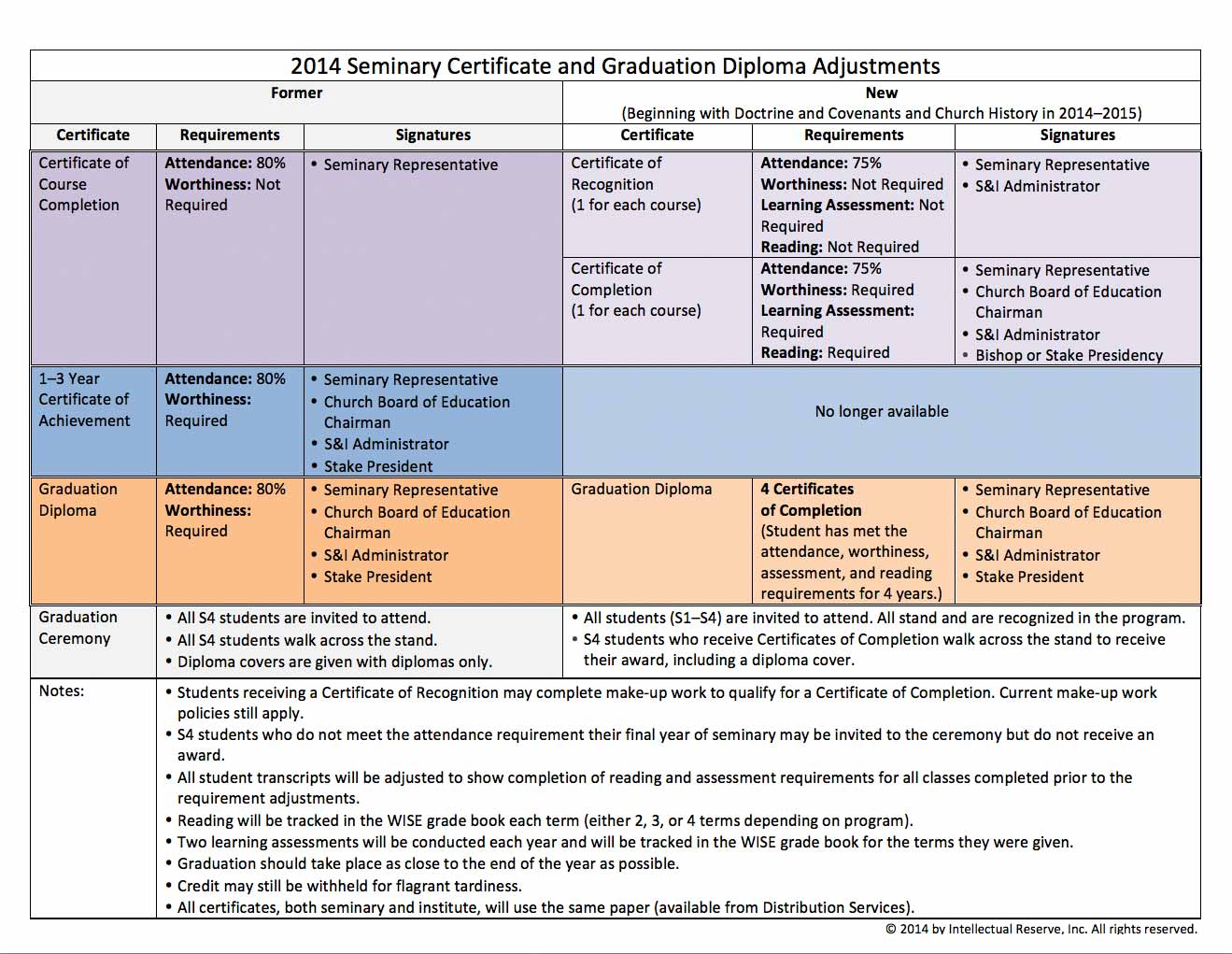
Improved Seminary Requirements Test the Character of Students
Word of changes to the new Seminary manuals, attendance policies, and graduation requirements are spreading online as students prepare for 2014 Seminary Year. As students, faculty, and parents review the changes some worries have developed.
It seems these alterations were established to accomplish a purpose. The age of missionaries has been lowered and members and proselyting missionaries are being exposed to more difficult questions via the internet. Because of these challenges, leaders from The Church of Jesus Christ of Latter-day saints have encouraged the need to strengthen the youth of the Church so they can be prepared for a more difficult world ahead of them.
Many of the topics that are troubling our youth and missionaries stem from more complex revelations they haven’t had the opportunity to study in depth. In the new curriculum, historical events and deeper doctrine have been broken down into simple contexts which are easier for younger minds to grasp, as understanding the material and student self-sufficiency will be vital.
As reported by Deseret News, Wayne Davis, manager of communications for Seminaries and Institutes of Religion had this to say about the changes made,
We are asking the youth to be more self-sufficient in their testimonies and their knowledge and in their ability to share that knowledge.
The Church of Jesus Christ of Latter-day Saints has altered the standards for students in these ways:
Graduation Requirements: Due to the new policies for Seminary requirements, the Church now mandates that students who receive their graduate diplomas for seminary have completed all four years of seminary. Certificates of recognition are no longer qualified for receiving a graduate diploma. The 1-3 Year Certificate of Achievement is no longer offered or in existence.
Attendance Policies: Required attendance has been lowered from 80% to 85%. [quote_right]Required attendance has been lowered from 80% to 75%.[/quote_right]
Manuals: A new version of Doctrine and Covenants and Church History Study Guide has recently been released. This manual now includes difficult and controversial topics that have in the past have not been covered. This guide has been altered to help educate and prepare younger members for challenging doctrinal questions that may be asked in the future. More manuals, such as Old and New Testament manuals will be released in 2015-2016.
Grades and Assessments: Learning assessments were unheard of in the old system of requirements. Now students must take and pass learning assessments given. They may take the assessment as many times as needed, but will not be allowed to graduate with a certificate of completion without participating and passing the assessments.
Worthiness: When receiving a certificate of completion in the old system, worthiness on the student’s part was not required. According to the new standards set, worthiness is not required if the student is receiving a certificate of recognition, but worthiness is required for every other certificate received.
Some Church members believe that these new procedures will sort the students with genuine testimonies, work ethic, and interest from those who care little for attending seminary. They say it will create a more supportive and close-knit classroom setting and encourage students to care more about their class grade.
Inevitably, the knowledge gained while participating in seminary will be invaluable to those who plan on serving missions for The Church of Jesus Christ of Latter-day Saints.










